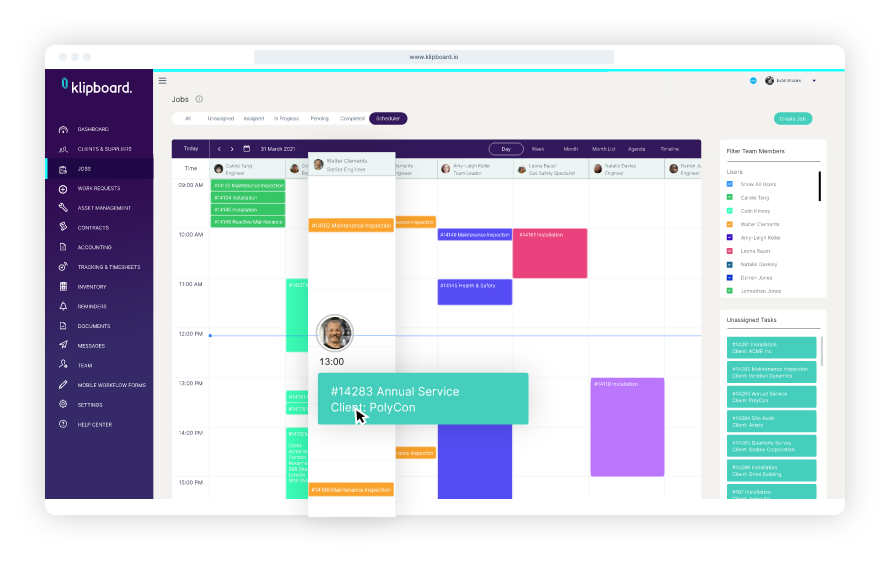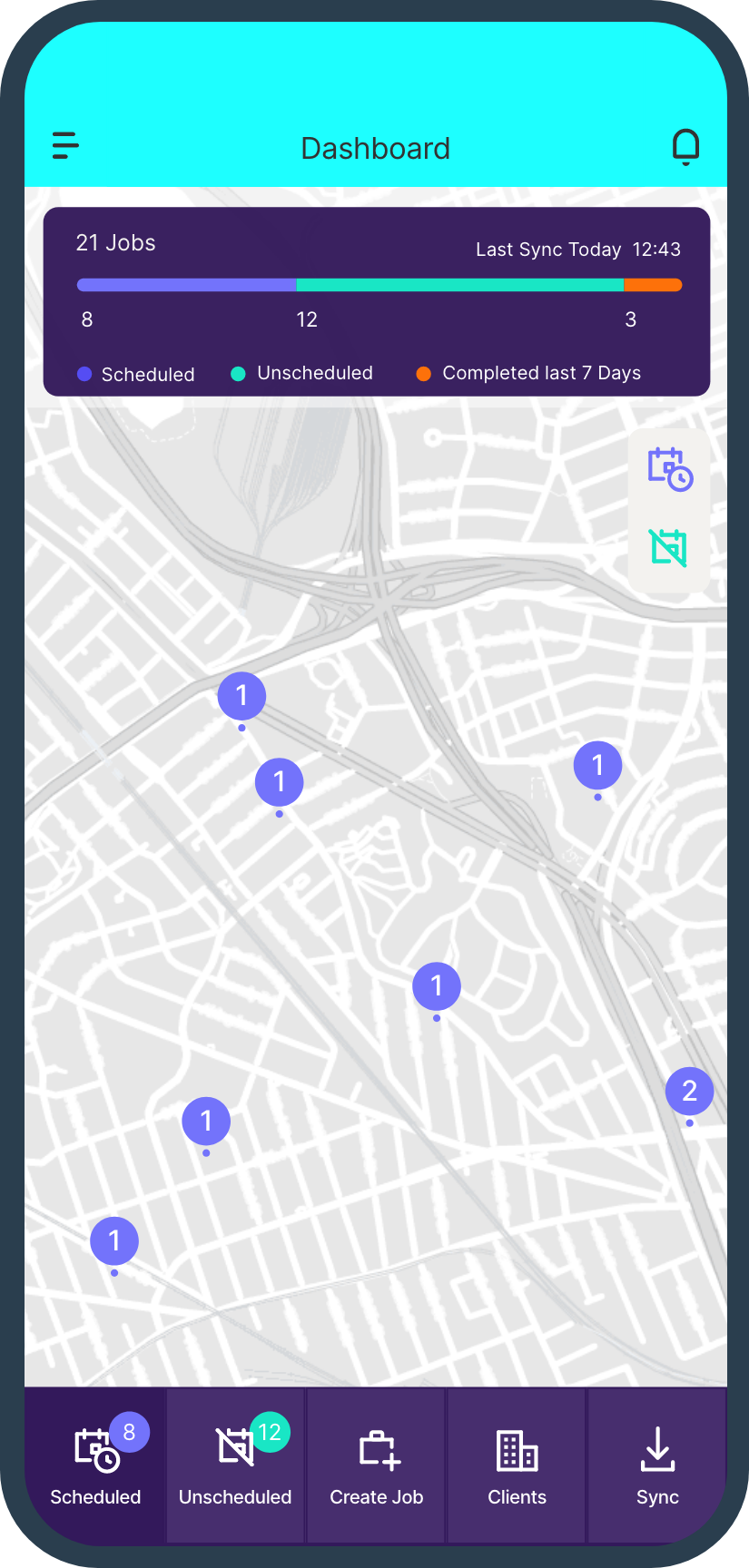Have you ever wished you could be in two places at once or carry out tasks more efficiently? In the world of business, managing your workforce and tracking their activities often feels like a complex juggling act. Job scheduling, especially in trade work, is a never-ending challenge, with the daily influx of tasks continuously on the rise. So, how can you enhance your scheduling process?
If you’re still relying on traditional methods involving spreadsheets, notepads, and piles of paper documents, you’ll soon find yourself facing significant hurdles as your business expands. As you hire new personnel and grow your workforce, the number of jobs will inevitably increase. This means even more time spent manually scheduling and managing your staff, which can become a daunting task.
Fortunately, technology is ever-evolving to meet our needs. Online job scheduling software comes to the rescue, streamlining operations and automating processes, leaving you wondering why you didn’t make the switch sooner.
Demystifying Field Service Job Scheduling
Whether you’re a plumber, construction worker, electrician, or part of any trade profession, job scheduling is an integral part of your daily routine. Batch job scheduling often proves to be more efficient and less time-consuming. It allows you to access multiple sources of information in one centralized location, a crucial factor for optimizing your team’s scheduling. Efficient scheduling considers factors like staff locations, travel time, and various skill sets within your team.
However, relying on paper-based methods for job scheduling becomes increasingly challenging. You might spend 20 to 30 minutes scheduling a single job while sifting through stacks of information. With technology, such as job scheduling software, you can access information quickly and intuitively, freeing up more time to focus on other critical aspects of your business.
Field service work encompasses various tasks, from maintenance to repairs and installations, each requiring specific skills and experiences. Quickly viewing this information at a glance can significantly reduce the time spent on batch job scheduling.
The Trials of Field Service Job Scheduling
Like any job, field service job scheduling presents its unique challenges. Overcoming these challenges is crucial for business growth. Job scheduling can be a daunting task, primarily when relying on manual processes. According to our Voice of the Trades report, 43% of field staff have experienced double bookings due to scheduling issues, leading to negative impacts on customer service. Double bookings or, worse, no-shows create an image of disorganization and chaos, tarnishing your business’s reputation.
Many of these scheduling challenges revolve around clarity and task overlap. Prioritizing clarity within your business processes is essential. Additionally, there might be instances of unexpected downtime or last-minute workload changes. Handling these situations with post-it notes, whiteboards, and spreadsheets can be cumbersome and time-consuming. Online job scheduling and batch scheduling tools can handle these changes instantly with a simple click.
Optimizing Your Field Service Job Scheduling
So, how can you make the most of your scheduling process? First, analyze how your jobs are organized and identify areas where process automations can be implemented. Grouping similar jobs together can significantly streamline your scheduling process, reducing the time spent sifting through data and ensuring more efficient scheduling.
Secondly, field service job scheduling software provides easy access to real-time data, making it easier to analyze staff availability and workload distribution. You can even group staff into teams for more efficient batch job scheduling. This approach provides complete visibility over your data and minimizes the risk of duplications or double bookings.
The Significance of Job Management and Scheduling Software
In today’s fast-paced world, we’re accustomed to the convenience of technology. Whether it’s using smartphone apps to navigate or communicate, we expect faster and more efficient solutions. In business, job management and scheduling software streamline workflows, improve efficiency, and boost productivity. Integrating this technology into your business is not just a smart move; it’s essential.
Job management software provides you with the tools to access information quickly, all from one central hub. It reduces business costs in the long run, saving time previously spent on manual scheduling and decreasing the need for office supplies. A robust job management software offers features like real-time staff and vehicle tracking, seamless accounting integrations, a mobile-friendly app, and instant communication between your office and field staff.

The Triple Benefits of Implementing Job Scheduling Software
Most online job scheduling software operates on the cloud, providing a flexible scheduling tool with easy data access. The top benefits of this software include:
- Improved Customer Satisfaction: Customers crave transparency and efficiency. With comprehensive job scheduling software, you can quickly relay essential information to customers, provide quotes, send invoices, and process payments while in the field. This accelerated communication results in higher customer satisfaction.
- Increased Efficiency: Communication with your staff in the field allows for faster scheduling of new jobs and immediate updates to existing ones. This rapid response brings in more business, increases revenue, and reduces time spent on administrative tasks.
- Enhanced Time Management: Job scheduling software streamlines workflows, freeing up time to focus on other critical business areas. Tasks that used to take ages, such as searching for specific job details, can now be accomplished in minutes, thanks to interactive calendars and powerful search features.
In Conclusion
Job scheduling software empowers your business with increased efficiency, better time management, and a streamlined workflow. Embrace this technology to stay ahead in today’s competitive landscape.

